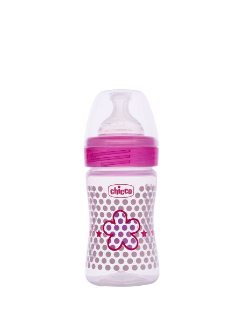
Choosing the right feeding bottle for your newborn or infant is a crucial decision that can significantly impact their feeding experience, comfort, and health. With a myriad of options available on the market, it can be overwhelming for new parents to find the best fit. Here are some essential tips to guide you in selecting the ideal feeding bottle for your little one.
1. Consider the Material of the Bottle
Feeding bottles are typically made from three main materials: plastic, glass, and silicone. Each material has its advantages and disadvantages:
- Plastic: Lightweight and durable, plastic bottles are a popular choice. However, it's essential to select BPA-free bottles, as BPA (bisphenol A) can leach harmful chemicals into the milk. High-quality plastic bottles are often designed to withstand wear and tear, making them suitable for everyday use.
- Glass: Glass bottles are considered a safe and eco-friendly option. They do not contain harmful chemicals, are easy to clean, and do not retain odors or flavors. However, they can be heavier and more prone to breakage, so extra caution is needed when handling them.
- Silicone: Flexible and lightweight, silicone bottles are gaining popularity among parents. They are less likely to shatter compared to glass and are available in various colors and designs. Look for food-grade silicone to ensure safety.
2. Choose the Right Nipple Shape and Flow Rate
The nipple is a vital component of the feeding bottle, as it directly influences your baby's feeding experience. Here’s what to consider:
- Nipple Shape: Nipples come in various shapes, including traditional, orthodontic, and wide-neck designs. Orthodontic nipples are designed to support healthy oral development, while traditional shapes may be more familiar to babies transitioning from breastfeeding. Experimenting with different shapes can help you determine which one your baby prefers.
- Flow Rate: The flow rate of the nipple can affect how quickly your baby receives milk. Newborns typically need slower flow rates to avoid choking, while older infants may require faster flows. Many brands offer nipples with adjustable flow rates, allowing you to customize the feeding experience as your baby grows.
3. Look for Anti-Colic Features
Colic can be a common concern for new parents, and selecting bottles with anti-colic features can help reduce gas and discomfort during feeding. Here are some features to look for:
- Vented Nipples: Nipples with ventilation systems allow air to flow back into the bottle while your baby is feeding, minimizing the risk of creating a vacuum and preventing gas bubbles from forming.
- Built-In Ventilation Systems: Some feeding bottles have advanced ventilation systems designed to reduce air intake, creating a more comfortable feeding experience for your baby.
4. Prioritize Ease of Cleaning
Keeping feeding bottles clean is essential for your baby’s health. Consider the following factors when selecting a feeding bottle:
- Wide Neck Bottles: Bottles with wide necks are generally easier to clean, allowing you to reach all areas with a bottle brush. This feature can help prevent the buildup of milk residue and bacteria.
- Dishwasher Safe: If you prefer the convenience of a dishwasher, check if the feeding bottle is dishwasher-safe. This feature can save you time and effort during busy days.
- Fewer Parts: Some feeding bottles come with complex designs and numerous parts, making cleaning more challenging. Opt for bottles with fewer components to simplify the cleaning process.
5. Choose the Right Size and Capacity
Feeding bottles come in various sizes, typically ranging from 4 oz to 8 oz and larger. Here’s how to determine the right size for your baby:
- Newborns: Smaller bottles (4 oz) are ideal for newborns, as they consume smaller amounts of milk at each feeding. As your baby grows and their appetite increases, you can transition to larger bottles (8 oz or more).
- Portability: If you plan to travel or go out frequently, consider smaller bottles that are easier to carry. Some parents prefer to have both small and large bottles for different situations.
6. Test for Comfort and Aesthetics
While functionality is key, the comfort and aesthetics of the feeding bottle can also play a role in your selection. Many brands offer bottles in various colors, shapes, and designs, allowing you to choose one that appeals to you and your baby. A visually appealing bottle can make feeding time more enjoyable for both parents and infants.
7. Budget Considerations
Feeding bottles are available at various price points, so it’s essential to find a balance between quality and affordability. While it’s tempting to go for the cheapest option, investing in high-quality feeding bottles can make a significant difference in your baby’s feeding experience and health. Look for bottles that offer good value without compromising on safety and functionality.
8. Trial and Error
Every baby is unique, and what works for one might not work for another. Don’t hesitate to experiment with different bottle types, nipple shapes, and materials until you find the perfect fit for your little one.
Conclusion
Choosing the best feeding bottle for your newborn or infant is essential for establishing a healthy feeding routine. By considering the material, nipple shape and flow rate, anti-colic features, ease of cleaning, size, comfort, aesthetics, and budget, you can find a feeding bottle that ensures your baby’s comfort and health during feeding. Remember that each baby is unique, so it may take some experimentation to find the right bottle for your little one. With the right feeding bottle in hand, you can enjoy peaceful feeding times, knowing your baby is well taken care of.
